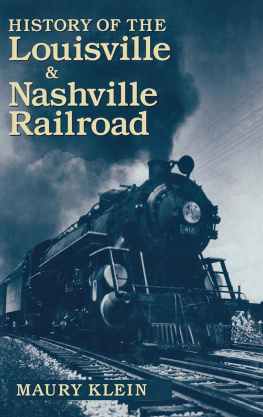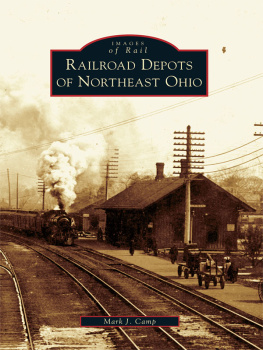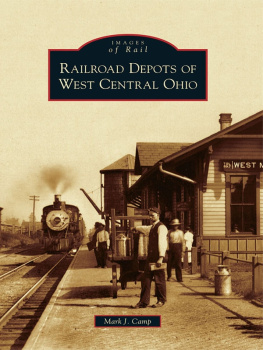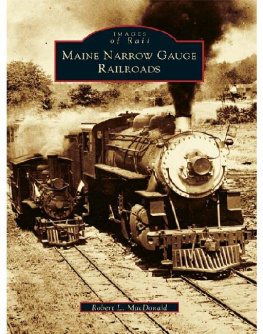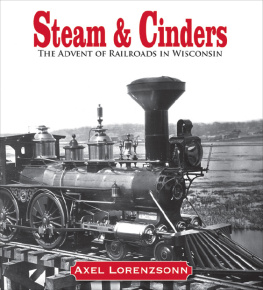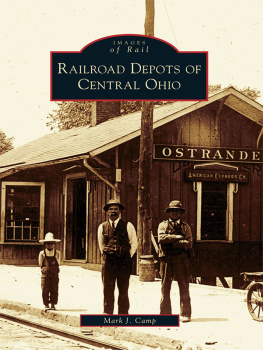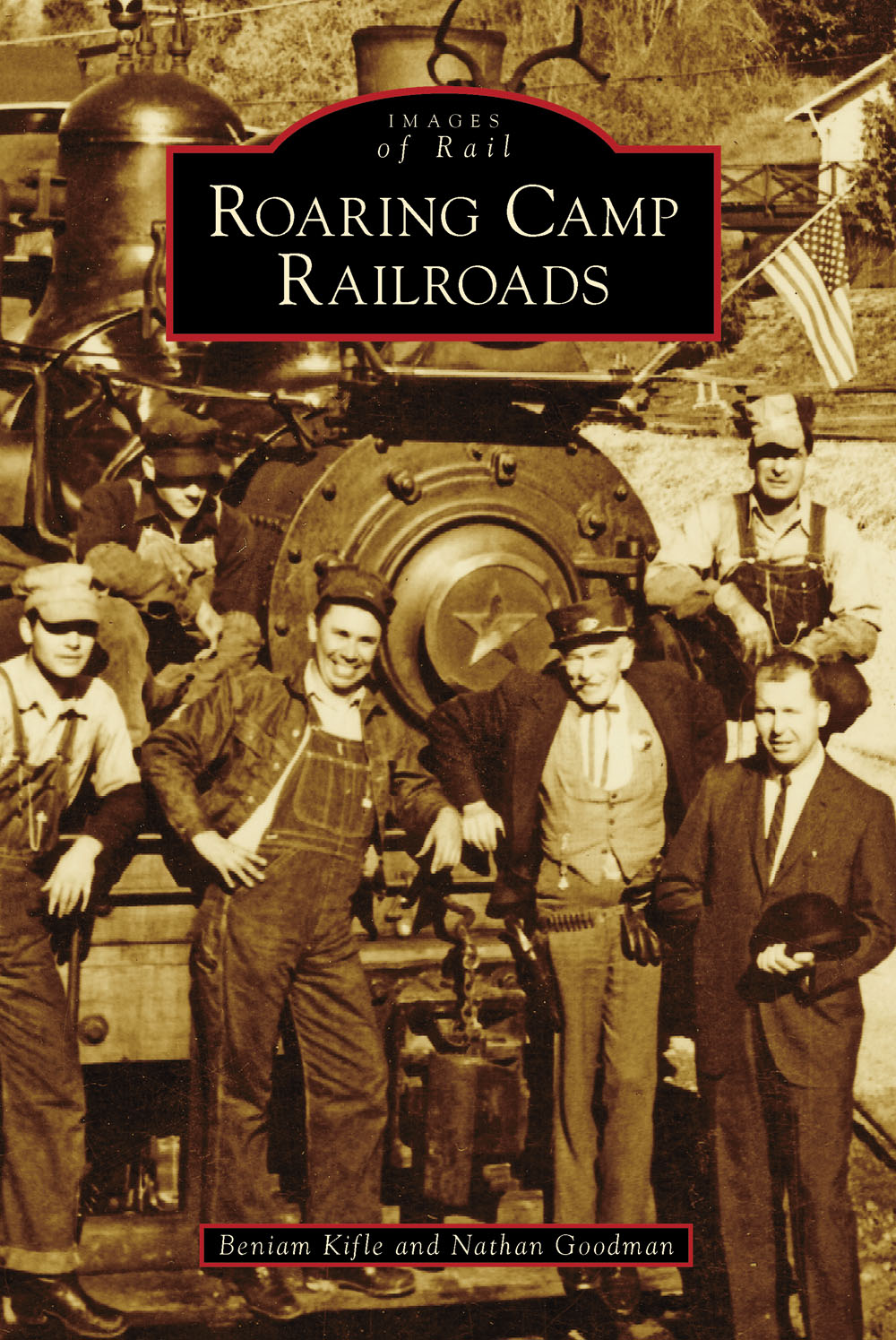
IMAGES
of Rail
ROARING CAMP
RAILROADS
ON THE COVER: In 1964, the days crew poses in front of locomotive No.1, Dixiana, with the founder of Roaring Camp, Frederick Norman Clark (standing, far right). With him are, from left to right, Bill and Chuck Hopkins, Gene Junior OLague, Mac McJunkin, and Charles Charlie Hoyle. (Courtesy of the Clark Estate.)
IMAGES
of Rail
ROARING CAMP
RAILROADS
Beniam Kifle and Nathan Goodman

Copyright 2013 by Beniam Kifle and Nathan Goodman
ISBN 978-1-4671-2996-1
Ebook ISBN 9781439643495
Published by Arcadia Publishing
Charleston, South Carolina
Library of Congress Control Number: 2013937267
For all general information, please contact Arcadia Publishing:
Telephone 843-853-2070
Fax 843-853-0044
E-mail
For customer service and orders:
Toll-Free 1-888-313-2665
Visit us on the Internet at www.arcadiapublishing.com
Mr. Kifle would like to dedicate this book to his younger brother Yonathan.
Mr. Goodman would like to dedicate it to his parents, who introduced him to the railroad at the age of two.
CONTENTS
ACKNOWLEDGMENTS
This book would not have been possible without the help of the many past and present Roaring Camp employees and community members who have come out of the woodwork with images, stories, dates, facts, and ideas. We are especially grateful to Georgiana and Melani Clark for allowing us access to the Clark Estates vast collection of photographs, newspaper clippings, and scrapbooks.
Thanks go to Jim Vail, who was instrumental in placing names to faces in the old photographs he so graciously provided, along with his wealth of knowledge about details and dates. Gene Junior OLague, Jeff Badger, Kent Jeffries, Bill Burket, and Brian Liddicoat were also most generous with their collections of images and railroad stories.
Last but not least, thank you, to John Park, Sandy Lydon, and Tom Shreve for the history lessons, and to TSG Multimedia and the Santa Cruz Museum of Art and History for their contributions of images. Unless otherwise noted, all photographs are courtesy of the Clark Estate.
INTRODUCTION
Long before California was a state, a party of trappers from Tennessee and Kentucky made their way west over the Santa Fe Trail, arriving in Mexican territory in 1834. One of the members of this party was named Isaac Graham. Not being a Mexican citizen, he was prohibited from owning land. However, another member of his party, Joseph Majors, became a naturalized Mexican citizen and was then able to procure the land then known as Rancho Zayante. By 1841, Majors, Graham, and others had set up the first powered sawmill in California, along the banks of Zayante Creek. The sawmill was soon joined by a gristmill and a whiskey distillery.
This camp of British and American men in decidedly Mexican territory became an attractive spot for many travelers coming west in the 1830s and 1840s. As the population of Grahams colony swelled, the sawmill and machinery roared and the liquor flowed. It soon became known as Drunkards Camp or A Wild and Roaring Camp, depending on who was talking about it. As the output of Grahams sawmill increased beyond the capacity of his camp to use the lumber, he constructed a highway from his mill through the mountains into Santa Cruz. The highway was to be used for shipping his lumber, and still exists, as todays Graham Hill Road. Until the railroad arrived in the middle of 1875, Grahams road was the only reliable route into Santa Cruz.
In 1850, California was admitted into the Union. Isaac Graham died on November 3, 1863. By 1867, arrangements were being made for his lands to be turned over to local logging interests. Wealthy San Francisco attorney Joseph Welch thwarted that plan by purchasing the land himself. Welch ended up with approximately 300 acres of old-growth redwood trees and meadows, including a grove of truly massive trees along the San Lorenzo River. What became known as the Big Trees Ranch was one of the first properties ever purchased with the aim of preservation. While the rest of the Santa Cruz Mountains were being clear-cut, Welch was hard at work setting up a tourist resort in his grove of big trees. By 1880, a narrow gauge railroad deposited travelers, eager for picnicking and escaping the heat of Californias Central Valley, on the doorstep of his resort.
Today, this tradition continues thanks to the vision of Norman Clark and his family, who arrived in the area in the mid-1950s with the dream of preserving this slice of Californias history. Upon seeing the Big Trees Ranch, Clark found it to be a perfect location, and he was able to secure the 180 acres still owned by Joseph Welchs descendents in a 99-year lease. In honor of the 50th anniversary of Clarks dream becoming a reality, this book is a look back over those first 50 years and what it took to build Americas Most Backward Railroad.
One
THE RAILROAD ARRIVES
In 1875, the Santa Cruz & Felton Railway (SC&F) was hastily constructed over the course of nine months, originally conceived as an extension of a lumber flume that terminated in what is now downtown Felton. Cut lumber from mills in the headwaters of the San Lorenzo River was floated down the 40-inch-wide triangular flume, and upon its arrival in Felton, it was sorted and loaded onto the 36-inch-gauge flatcars of the SC&F. After eight miles of sharp curves through the San Lorenzo River Canyon, the SC&F arrived at the wharf in Santa Cruz. Here, the lumber was loaded on oceangoing ships and sent to market.
After only five years of existence, the SC&F was purchased by another 36-inch-gauge railroad looking to gain access to Santa Cruz. The South Pacific Coast Railroad (SPCRR), which had started construction only a year after the SC&F, was being built south from Dumbarton Point and Newark through San Jose and Los Gatos. In 1879, the SPCRR had reached Felton after boring two separate, mile-long tunnels and two shorter tunnels, and building countless bridges to get through the Santa Cruz Mountains. Rather than constructing a new line down the east wall of the San Lorenzo River Canyon, the SPCRR absorbed the SC&F. By May 1880, the line over the hill was open for business. Heavy freights full of lumber, lime, produce, and gunpowder battled the grades out of the mountains, and long passenger trains full of travelers and tourists rolled in.
The SPCRR was short-lived as well, and in 1886, it was sold to the Southern Pacific Railroad. The sale did not much affect the day-to-day operations until around 1900. In December 1902, the first section of standard gauge track was laid, and on May 29, 1909, the first standard gauge Southern Pacific train ran between San Francisco and Santa Cruz. For the next 30 years, the Southern Pacific did big business in the Santa Cruz Mountains. By the end of 1940, however, the line over the hill between Los Gatos and Olympia had been torn up, and all trains were routed through Watsonville. The portion of the railroad between Santa Cruz and Olympiajust north of Feltoncontinued to see heavy freight traffic from a sand quarry and occasional passenger trains until the 1980s, when the line was sold once again, this time to Norman Clark.

F. Norman Clark, the founder of Roaring Camp, was originally from Southern California. He fell in love with the scenic beauty of the old-growth redwood forest in the Big Trees Ranch in Felton, and envisioned opening an 1880s-themed railroad town in the area.
Next page

